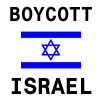Most of the following may be totally off-base, and like much of what i commit to publication on this blog at this early stage, it will probably embarrass me at some point in the future, once i’ve gotten more of a clue. But here goes anyway.
The wearing of the hijab is nearly universal here. It is interesting to hear the various positions on it. Some women wear the veil because they say they experience less harassment than without. Some lighter-skinned women, however, say they experience exactly the opposite: men ignore them if they are not wearing the veil because they assume she will not understand arabic anyway, but if they wear the veil, it is assumed that she can understand arabic, and the harassment flies freely. In a lot of places, it seems to be purely a matter of fashion. You’ll see a lot more sheer veils in these places—places like on the Corniche, along the River Nile, which is popular among the hip kids. You’ll also see a lot of glitter there. The guys seem to really dig these black t-shirts (tee sheert in arabic) with glittery patterns all over them. In fact, in outward appearance, most young egyptian guys would look totally gay to the average american eye. They dress gay and they walk gay and, according to what i’ve heard from an iraqi guy, they talk gay, too. It is much more common to see men holding hands and walking arm-in-arm here than men and women. In fact, i’ve only seen the latter on the Corniche and on the bridges over the Nile or the faluccas floating down the Nile, where romance is acceptable or at least overlooked. Strangely, extra-marital relations between the sexes are more seriously frowned upon than homosexuality. Still, it’s not very common to see women being so physically close, except maybe on the women-only cars on the Metro. On the latter point, women generally ride in all of the cars, and the gender is fairly balanced, but the balance seems to change during peak commute hours, when the cars are totally packed and the men are more likely to take their liberties.
The niqab, the full face veil, is also very common. I think maybe five percent of the women i see off campus or outside of Zamalek wear the niqab. An interesting linguistic note (explored more deeply in a separate post): i was surprised to discover that niqab is related to the word niqaba, which is a syndicate or trade union. Then again, it’s also related to tanqeeb, which is the word for oil drilling or exploration. This is a very strange and fascinating language.

